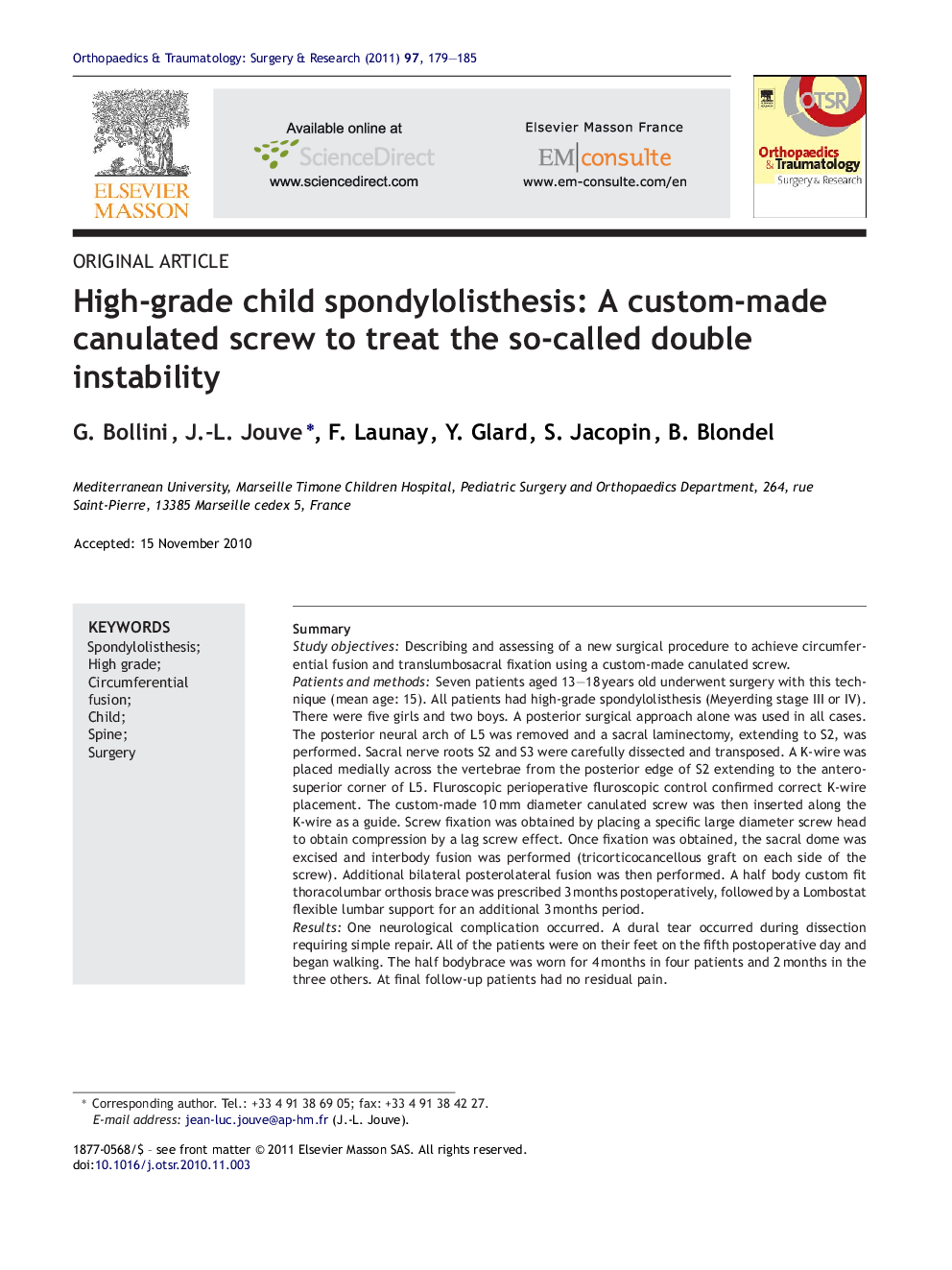| کد مقاله | کد نشریه | سال انتشار | مقاله انگلیسی | نسخه تمام متن |
|---|---|---|---|---|
| 4082083 | 1267622 | 2011 | 7 صفحه PDF | دانلود رایگان |

SummaryStudy objectivesDescribing and assessing of a new surgical procedure to achieve circumferential fusion and translumbosacral fixation using a custom-made canulated screw.Patients and methodsSeven patients aged 13–18 years old underwent surgery with this technique (mean age: 15). All patients had high-grade spondylolisthesis (Meyerding stage III or IV). There were five girls and two boys. A posterior surgical approach alone was used in all cases. The posterior neural arch of L5 was removed and a sacral laminectomy, extending to S2, was performed. Sacral nerve roots S2 and S3 were carefully dissected and transposed. A K-wire was placed medially across the vertebrae from the posterior edge of S2 extending to the anterosuperior corner of L5. Fluroscopic perioperative fluroscopic control confirmed correct K-wire placement. The custom-made 10 mm diameter canulated screw was then inserted along the K-wire as a guide. Screw fixation was obtained by placing a specific large diameter screw head to obtain compression by a lag screw effect. Once fixation was obtained, the sacral dome was excised and interbody fusion was performed (tricorticocancellous graft on each side of the screw). Additional bilateral posterolateral fusion was then performed. A half body custom fit thoracolumbar orthosis brace was prescribed 3 months postoperatively, followed by a Lombostat flexible lumbar support for an additional 3 months period.ResultsOne neurological complication occurred. A dural tear occurred during dissection requiring simple repair. All of the patients were on their feet on the fifth postoperative day and began walking. The half bodybrace was worn for 4 months in four patients and 2 months in the three others. At final follow-up patients had no residual pain.DiscussionThe lumbar spine in children with high-grade spondylolisthesis adapts to the new mechanical conditions after surgery. Therefore the principal goal of treatment is to obtain stable osseous fusion. Our treatment philosophy is based on the concept of a dual instability. We believe that a general instability exists which causes the development of spondylolisthesis; this must be respected by not attempting to correct the displacement beyond what can be obtained on the operating table with complete muscle release. The other, locoregional instability, must be stabilized during circumferential fusion. The custom-made, 10 mm screw has been shown to be effective in neutralizing the mechanical stress during circumferential fusion with a posterior approach alone, thus avoiding the risks of an anterior approach. Long-term results show that the preoperative posture is not the sole mechanical determinant in children and adolescents but that this posture is largely a reaction to pain.Level of evidenceLevel IV. Retrospective study.
Journal: Orthopaedics & Traumatology: Surgery & Research - Volume 97, Issue 2, April 2011, Pages 179–185